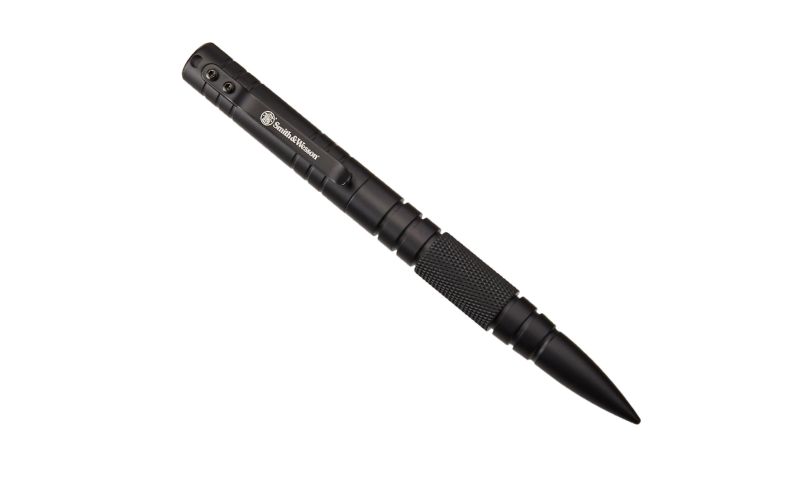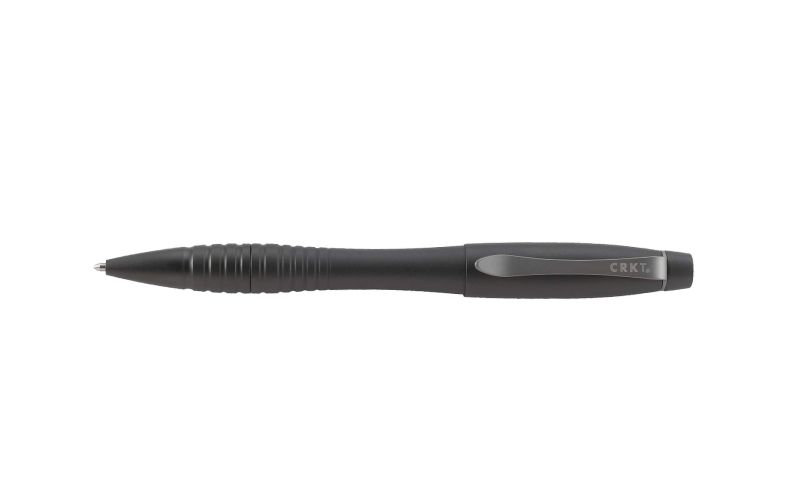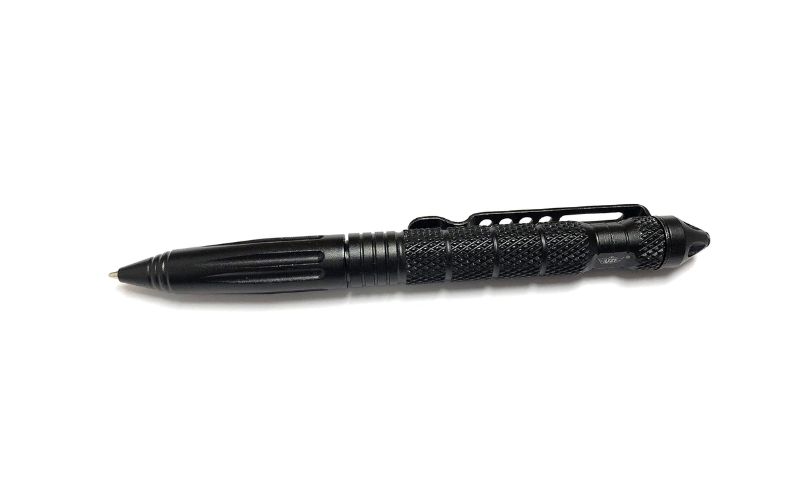Tactical pens are more than just pens — they’re discreet tools for writing, self-defense, and survival. Here’s how to pick the perfect one for your everyday carry.
If you’ve ever scrolled through those “everyday carry” (EDC) videos on YouTube and thought, “Who actually needs half of this stuff?, you’re not alone. A tiny flashlight? Okay, maybe. A mini crowbar? A bit dramatic. But a pen that can also save your life? Now we’re talking.
Tactical pens are one of those rare crossover items: they look like something you could actually use to jot down a phone number, but they’re also strong enough to break glass, fend off an attacker, and probably outlive your next three phones. These things are sleek, subtle, and, if you pick the right one, totally worth tossing in your bag or pocket.
So, why would anyone need a tactical pen? And which ones are actually worth your money?
Let’s get right into it!
Why Do We Even Need Tactical Pens?
At first glance, a tactical pen might seem like just another “cool” accessory, the kind of thing someone buys after binge-watching too many Jason Bourne movies. But they have legit uses.
- Self-defense: They’re compact, easy to grab, and don’t scream “weapon,” which makes them discreet for personal safety.
- Glass-breaking: In emergencies, like being stuck in a car after an accident, that hardened tip can smash a window faster than your adrenaline rush wears off.
- Everyday writing: Tactical pens are, first and foremost, pens. You can sign a contract, take notes in class, or scribble your grocery list without carrying a separate writing tool.
- Durability: These things are usually made from aircraft-grade aluminum or stainless steel. They can take a beating without falling apart.
Basically, they’re like the Swiss Army knives of the writing world: functional, durable, and secretly a little bit badass.
What to Look for in a Tactical Pen
Before you start throwing money at the first tactical pen that pops up in your feed, take a second to figure out what actually matters. Tactical pens aren’t one-size-fits-all, and the best one for you depends on how you plan to use it.
- Material: Look for aircraft-grade aluminum or stainless steel. They’re strong enough to take impact without feeling like you’re hauling around a brick. Cheap plastic ones? Hard pass.
- Grip: Knurled (textured) grips give you better control in self-defense situations but might feel rough if you write a lot. Smooth grips are comfier for long writing sessions but can slip if your hands are sweaty.
- Tip Style: Some have a hardened glass-breaker tip, others have a more rounded defensive point. If emergency glass-breaking is high on your list, go for the pointed tip.
- Ink Cartridge: Pressurized cartridges like Rite-in-the-Rain or Fisher Space Pen refills work upside-down, underwater, or in freezing temps. If you just want a smooth daily writer, a regular refill is fine.
- Carry Method: A sturdy pocket clip keeps the pen handy and prevents it from getting lost at the bottom of your bag. Some clips are reversible for left or right carry.
- Size and Weight: Heavier pens feel solid in self-defense but might fatigue your hand if you’re writing for hours. Lightweight pens are easier to carry all day.
Gerber Impromptu Tactical Pen
If tactical pens had celebrity status, the Gerber Impromptu would be an A-lister. This pen doesn’t try too hard, but it still pulls attention. It’s made from machined steel and has a tempered steel tip designed to break glass. The “impromptu” part isn’t just marketing, if you need it, it’s ready to go.
Why it’s good:
- The steel body feels solid in the hand.
- Rite-in-the-Rain ink cartridge means you can write even in wet conditions.
- Click mechanism instead of a twist cap, which makes it faster to use in a pinch.
The vibe: Reliable, slightly bulky, but in a “built to last” kind of way. This is the pen you’d want if you travel a lot or work in unpredictable environments.
Smith & Wesson SWPENMPBK

Smith & Wesson might be best known for firearms, but their tactical pen game is surprisingly strong. The SWPENMPBK is lightweight but still tough, made from T6061 aircraft aluminum. The design leans more toward sleek than bulky, making it a solid choice for everyday carry without feeling like you’re lugging around an actual weapon.
Why it’s good:
- Lightweight but sturdy.
- Screw-off cap design keeps the writing tip protected.
- Subtle design doesn’t scream “tactical” if you’re in a professional setting.
The vibe: Minimalist with a quiet confidence. This is the pen for people who want discreet EDC gear that blends into office life but still has your back.
CRKT Williams Tactical Pen

The CRKT Williams looks so normal it’s almost suspicious. Designer James Williams created it to be discreet enough that it wouldn’t raise eyebrows, even in places with strict self-defense tool rules. It’s made of high-strength aluminum and has a smooth, streamlined body that doubles as a writing instrument and a last-resort defensive tool.
Why it’s good:
- Incredibly discreet, no aggressive knurling or military styling.
- Comfortable grip for both writing and, well, other uses.
- Lightweight without feeling cheap.
The vibe: The undercover agent of tactical pens. It could be lying on a conference table and nobody would think twice, but in the right hands, it’s a serious tool.
UZI Tactical Defender Pen

UZI might sound like they’re just trying to appeal to action movie fans. However, their Tactical Defender Pen is no gimmick. This model comes with a glass breaker tip, aircraft-grade aluminum construction, and often includes extra functions like a built-in handcuff key (yes, really).
Why it’s good:
- Multi-functional design.
- Feels solid but not too heavy.
- Inexpensive compared to many competitors.
The vibe: The multitasker. If you’re the type who loves having gadgets that do more than one thing, the UZI is basically the tactical pen equivalent of a Swiss Army knife.
Best One for Your Needs
Choosing the best tactical pen isn’t about finding “the strongest” or “the most expensive” one, it’s about matching the pen to your lifestyle.
- For the professional who doesn’t want to stand out: The CRKT Williams is your best bet. It blends in perfectly in an office, conference, or formal setting while still being a capable tool.
- For the traveler and outdoor adventurer: The Gerber Impromptu holds up in all kinds of weather and situations. It’s the tank of tactical pens.
- For the minimalist who wants lightweight gear: The Smith & Wesson SWPENMPBK gives you strength without unnecessary bulk.
- For the gadget lover: The UZI Tactical Defender is fun, versatile, and comes with extra features you’ll actually use in emergencies.
Think about where you’ll keep it, how often you’ll write with it, and whether you want people to notice it. A good tactical pen should feel natural in your daily routine, not like you’re cosplaying as an action hero.
Conclusion
Tactical pens aren’t just a fad. They’re one of the few EDC tools that combine practicality, durability, and self-defense potential in a package you’ll actually use. Whether you’re signing documents at work, breaking a window in an emergency, or just feeling better knowing you’ve got a discreet safety tool, the right tactical pen can be a small but meaningful upgrade to your everyday carry.
The key is to choose one that fits your lifestyle, something you’ll actually carry and use. And remember: the best tool isn’t the one with the most features, it’s the one you’ll have on you when you need it.